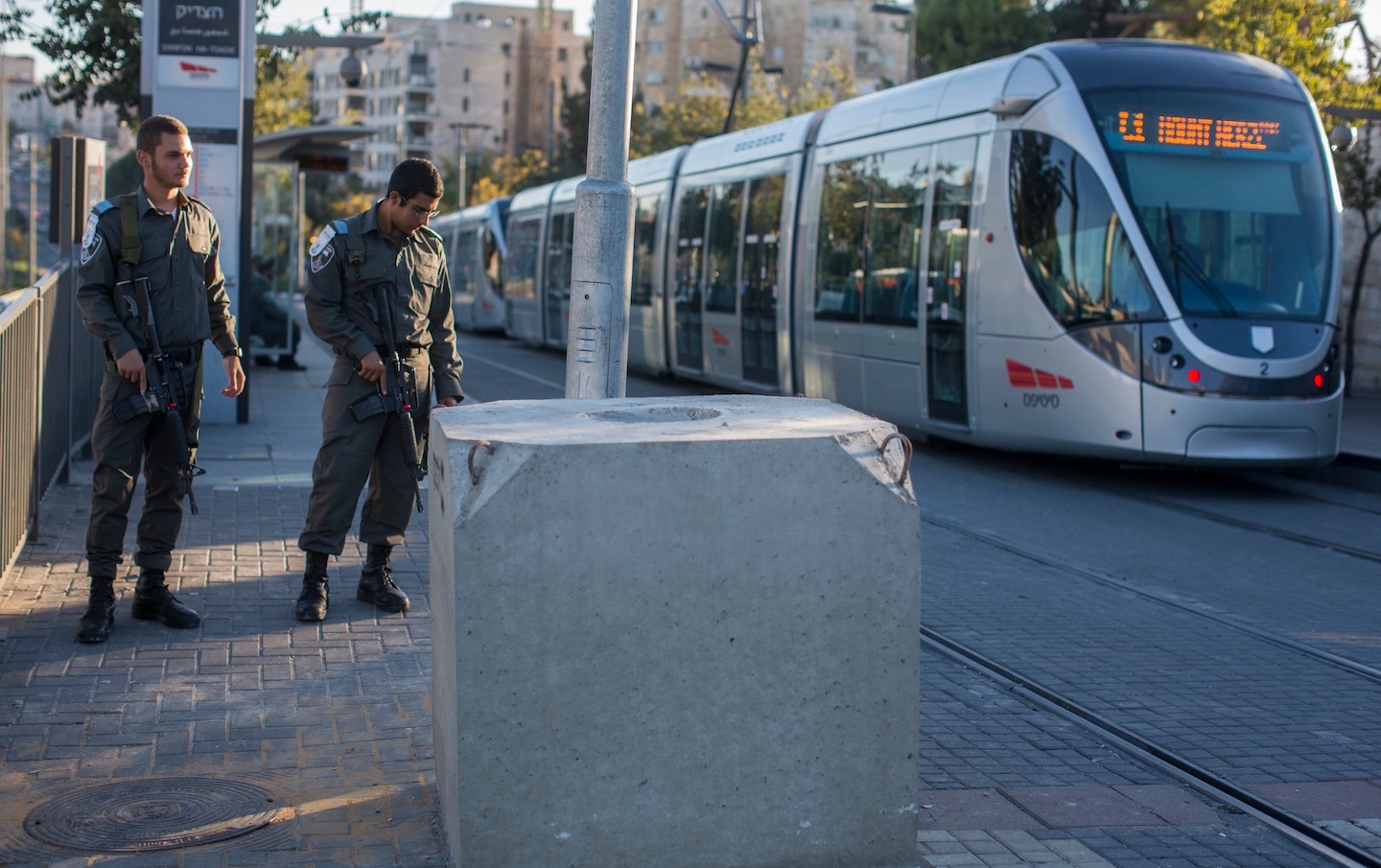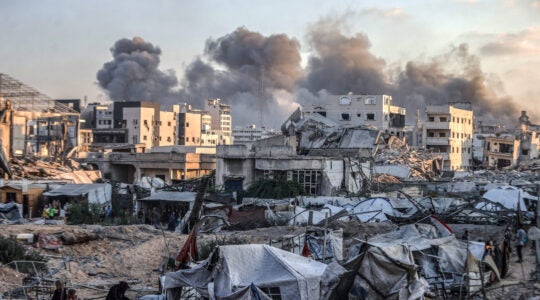JERUSALEM (JTA) — It’s 3 p.m. on a Thursday and the Jerusalem light rail is packed with secular and religious, Jew and Arab, as it heads east from the city’s Central Bus Station.
From there it passes some of the city’s most crowded venues, stopping at the Mahane Yehuda open market and coursing down Jaffa Street until it hits the city center, where the train cars empty out onto a thoroughfare loud with foot traffic.
By the time it reaches the station in the Arab neighborhood of Shuafat, the train is nearly empty and the scene is desolate. The waiting area is missing a roof and the ticket machines are boarded up — the result of riots that broke out there in July following the murder of 16-year-old Mohammed Abu Khdeir.
The first service of its kind in Israel, the Jerusalem light rail was intended as a symbol of a forward-looking metropolis, a sleek, efficient and clean mode of transportation that united the city’s disparate halves and connected Jerusalem’s far-flung neighborhoods to the city center.
But after two Palestinian drivers rammed their vehicles into crowds waiting at light rail stations in recent weeks, the train has become enveloped in the mounting tensions in Israel’s capital city. The attacks killed four people, including a 3-month-old girl, and injured 22.
“There’s a bad atmosphere in Jerusalem,” said Ozel Vatik, spokesman for Citypass, the company that runs the light rail. “The light rail is a microcosm of Jerusalem. It runs in the central spaces of Jerusalem. So what happens in Jerusalem happens in the light rail, for better or worse.”
When service began in 2011, the light rail aimed at easing congestion on Jerusalem’s ancient roads. Running down the central Jaffa Street, a windy thoroughfare once choked with bus traffic, the trains encounter few stoplights and run at an average speed of 15 miles per hour. The electric trains make less noise and consume less energy than buses and have reduced air pollution on Jaffa Street by up to 70 percent, Vatik said.
The one line traverses the full breadth of the city, from Mount Herzl in the west to Pisgat Zeev in the east, along the way passing the Central Bus Station, City Hall, the Old City and several Arab neighborhoods beyond the so-called “seam line” between the Jewish and Arab halves of Jerusalem. Citypass hopes to expand the existing route to reach Hadassah Medical Center in Ein Kerem in the west and Hebrew University in the east as well as the city’s southern neighborhoods.
The train’s eastern section has eased access to the city center for residents of poorer neighborhoods like Shuafat. But some worry the physical link between east and west will make the city harder to split under a future Israeli-Palestinian peace treaty.
“On one hand it creates an illusion of a united city, and the recent events in the city prove that it is not,” said Yudith Oppenheimer, executive director of Ir Amim, a nongovernmental organization that advocates for Arab Jerusalemites. “On the other hand, because they never dealt with transit in the Palestinian neighborhoods, it’s a transit tool that serves the Palestinians in the city.”
As unrest has increased of late in Jerusalem, the light rail’s crowds, central route and easy access from the street have made it attractive to terrorists. Police have responded with concrete barricades at some stations and increased patrols. The Jerusalem municipality has also launched balloons and unmanned aerial vehicles to conduct surveillance over the train’s route.
“It’s a relatively easy target in terms of a vehicle’s ability to drive into people,” Israel Police spokesman Micky Rosenfeld said. “It has a large number of passengers. We’re talking about a central area with a lot of movement.”
As they have always done after terror incidents, Jerusalemites were quick to carry on with their routines following the recent attacks, packing the trains at rush hour and focusing mostly on jostling into the crowded cars. But the attacks have also reminded riders of the potential for danger.
Hadas Meshi, a 17-year-old Jerusalemite originally from England, said security forces are trying to reassure residents following attacks.
“But it’s not really safer,” Meshi said. “The next day, you see it on people’s faces. Something is always going on somewhere.”
JTA has documented Jewish history in real-time for over a century. Keep our journalism strong by joining us in supporting independent, award-winning reporting.






